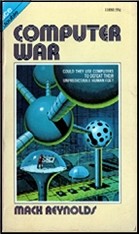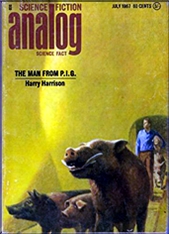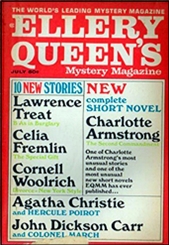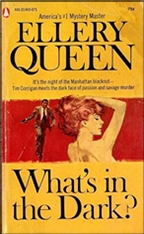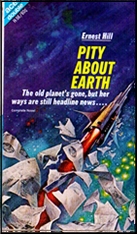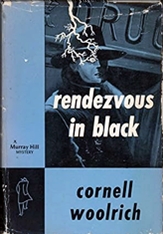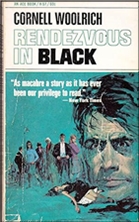Mon 15 Jan 2024
Diary Review: MANNING COLES -The House at Pluck’s Gutter.
Posted by Steve under Diary Reviews[6] Comments
MANNING COLES -The House at Pluck’s Gutter. Tommy Hambledon #26 (including one collection of short stories). Pyramid X-1782; paperback, first US edition, April 1968. Published earlier in the UK by Hodder and Stoughton, hardcover, 1963.
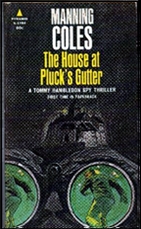
A pair of binoculars with a concealed piece of microfilm leads Tommy Hambledon and his amateur assistants on a chase from Belgium to Rome and finally back to England. Forgan and Campbell are given brief tours of [every] prison along the way, and Hambleldon himself is arrested at least twice, endures several blows on the head, is thrown overboard in a sack, and then trapped at the top of a radio tower.
The microfilm ends up in the hands of the diplomatically immune Knights of the Reconciliation, who plan to blackmail England for its return.
The humor [of Hambledon’s previous escapades this time] affords only an occasional smile — too close to slapstick? — but the ending, with a film company’s version of the Marines to the rescue, was lunatic genius. In fact, the concluding chapters were much easier to take than all of the initial running around. The author’s use of punctuation was bewildering at times, with lots of exclamation points, but that’s a minor quibble.
Rating: ***½.
Update: Until the former’s death, hidden behind the Manning Coles byline was a long-running collaboration between two British writers, Adelaide Frances Oke Manning (1891 – 1959) and Cyril Henry Coles (1899 – 1965).
The last two Hambledon books, including this one as the last, were written by Coles and Tom Hammerton. Why this one first appeared only as a paperback original in this country is a mystery.
